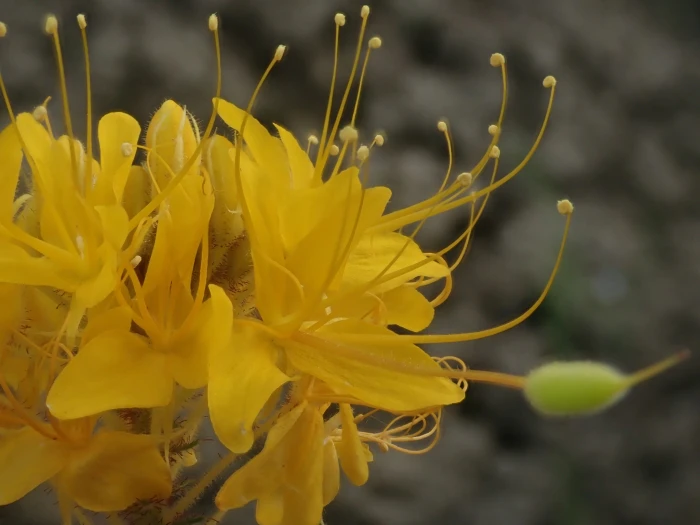Golden Bee Plant
(Cleomella platycarpa)
Golden Bee Plant (Cleomella platycarpa)
/
/

Nolan Exe
CC BY 4.0
Image By:
Nolan Exe
Recorded By:
Copyright:
CC BY 4.0
Copyright Notice:
Photo by: Nolan Exe | License Type: CC BY 4.0 | License URL: http://creativecommons.org/licenses/by/4.0/ | Rights Holder: Nolan Exe | Publisher: iNaturalist | Date Created: 2020-05-31T17:29:37-07:00 |


















Estimated Native Range
Climate Requirements
| • Precipitation | 11" - 17" |
| • High Temp. | 84°F - 92°F |
| • Low Temp. | 18°F - 25°F |
Summary
Cleomella platycarpa, commonly known as Golden Bee Plant or Golden Spiderflower, is an annual herb native to the sagebrush steppe ecosystems in the western United States, particularly from northeastern California to Idaho, including the Modoc Plateau. It thrives in clay and volcanic soils at elevations of 2,600 to 3,900 feet. This plant typically reaches about 24 inches in height and displays bright yellow flowers that bloom from late spring to early summer, adding a splash of color to the arid landscape.
Golden Bee Plant is valued for its drought tolerance and ability to thrive in poor soils, making it a suitable choice for xeriscaping and restoration projects in arid regions. It is also used in wildflower gardens for its attractive flowers and as a food source for pollinators. In cultivation, it requires minimal maintenance, preferring full sun and well-drained soils. While it is not commonly found in nurseries, it can be grown from seed. Historically, some Plateau Indian tribes utilized an infusion made from this plant to treat children’s colds and fevers, highlighting its medicinal properties.CC BY-SA 4.0
Golden Bee Plant is valued for its drought tolerance and ability to thrive in poor soils, making it a suitable choice for xeriscaping and restoration projects in arid regions. It is also used in wildflower gardens for its attractive flowers and as a food source for pollinators. In cultivation, it requires minimal maintenance, preferring full sun and well-drained soils. While it is not commonly found in nurseries, it can be grown from seed. Historically, some Plateau Indian tribes utilized an infusion made from this plant to treat children’s colds and fevers, highlighting its medicinal properties.CC BY-SA 4.0
Plant Description
- Plant Type: Herb
- Height: 1-2.5 feet
- Width: 1-1.5 feet
- Growth Rate: Moderate
- Flower Color: Yellow
- Flowering Season: Summer
- Leaf Retention:
Growth Requirements
- Sun: Full Sun
- Water: Low
- Drainage: Medium, Fast
Common Uses
Drought Tolerant, Low Maintenance
Natural Habitat
Sagebrush steppe ecosystems
Other Names
Common Names: Broadfruit Stinkweed, Broadfruit Bee-Plant
Scientific Names: Cleomella platycarpa, Celome platycarpa, Cleome platycarpa, Peritoma platycarpa
GBIF Accepted Name: Cleomella platycarpa